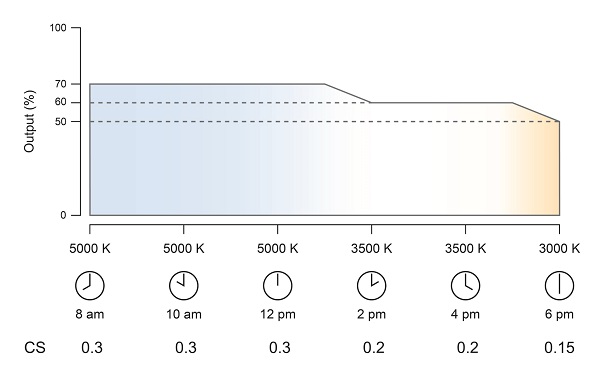The Lighting Research Center (LRC) at Rensselaer Polytechnic Institute has recently released a free, open-access circadian stimulus (CS) calculator to help lighting professionals select light sources and light levels that will increase the potential for circadian-effective light exposure in architectural spaces, utilizing the CS metric. Developed by LRC researchers, the CS metric is a new way to quantify light’s impact on acute melatonin suppression, a marker of circadian system activation.
“Lighting for the circadian system employs lighting design objectives that differ from those typically used in traditional architectural lighting design, and therefore, requires metrics that differ from those currently used by lighting designers,” said Professor Mariana Figueiro, Light and Health Program Director at the LRC.
 |
|
The Lighting Research Center (LRC) at Rensselaer Polytechnic Institute's free, open-access circadian stimulus (CS) calculator. (LRC/LEDinside) |
“The CS metric is based on our model of how the retina converts light signals into neural signals for the circadian system,” said Professor Mark Rea, LRC Director.
Rea and Figueiro recently published a paper in Lighting Research & Technology detailing how the model works and how it can be used to predict effectiveness of various light sources for stimulating the human circadian system. The paper, “Light as a circadian stimulus for architectural lighting,” was published in December 2016.
The CS metric can be applied with relative ease using the CS calculator. The CS calculator enables a lighting professional to quickly and easily convert the photopic illuminance provided by any light source at any light level into the effectiveness of that light for stimulating the human circadian system, assuming a one-hour exposure to that light source.
When specifying lighting for the circadian system, it is important to consider light level, spectrum (color), timing and duration of exposure, and photic history (previous light exposures). An important first step in establishing whether a lighting system will deliver a prescribed amount of CS is to determine the spectral irradiance distribution of the light incident at the cornea. From this spectral irradiance distribution it is then possible to calculate CS, which is the effectiveness of the spectrally weighted irradiance at the cornea from threshold (CS = 0.1) to saturation (CS = 0.7). Exposure to a CS of 0.3 or greater at the eye, for at least one hour in the early part of the day, is effective for stimulating the circadian system and is associated with better sleep and improved behavior and mood.
In the October issue of LD+A, Figueiro and colleagues discuss the CS metric and present useful tips to help designers create lighting plans that deliver prescribed amounts of CS. In the article, the authors note that, to use the calculator, designers should formulate a base condition by evaluating the space using the CS calculator and commercially available software such as AGi32. The design can later be fine-tuned by again using the CS calculator, while also accommodating IES recommendations, energy codes, and any client workspace specifications.
Resources
LD+A article: http://www.lrc.rpi.edu/resources/newsroom/LD+A_CircadianStimulus_Oct2016.pdf
CS calculator: http://www.lrc.rpi.edu/programs/lightHealth/index.asp
Lighting Research & Technology paper: http://lrt.sagepub.com/content/early/2016/11/14/1477153516682368












